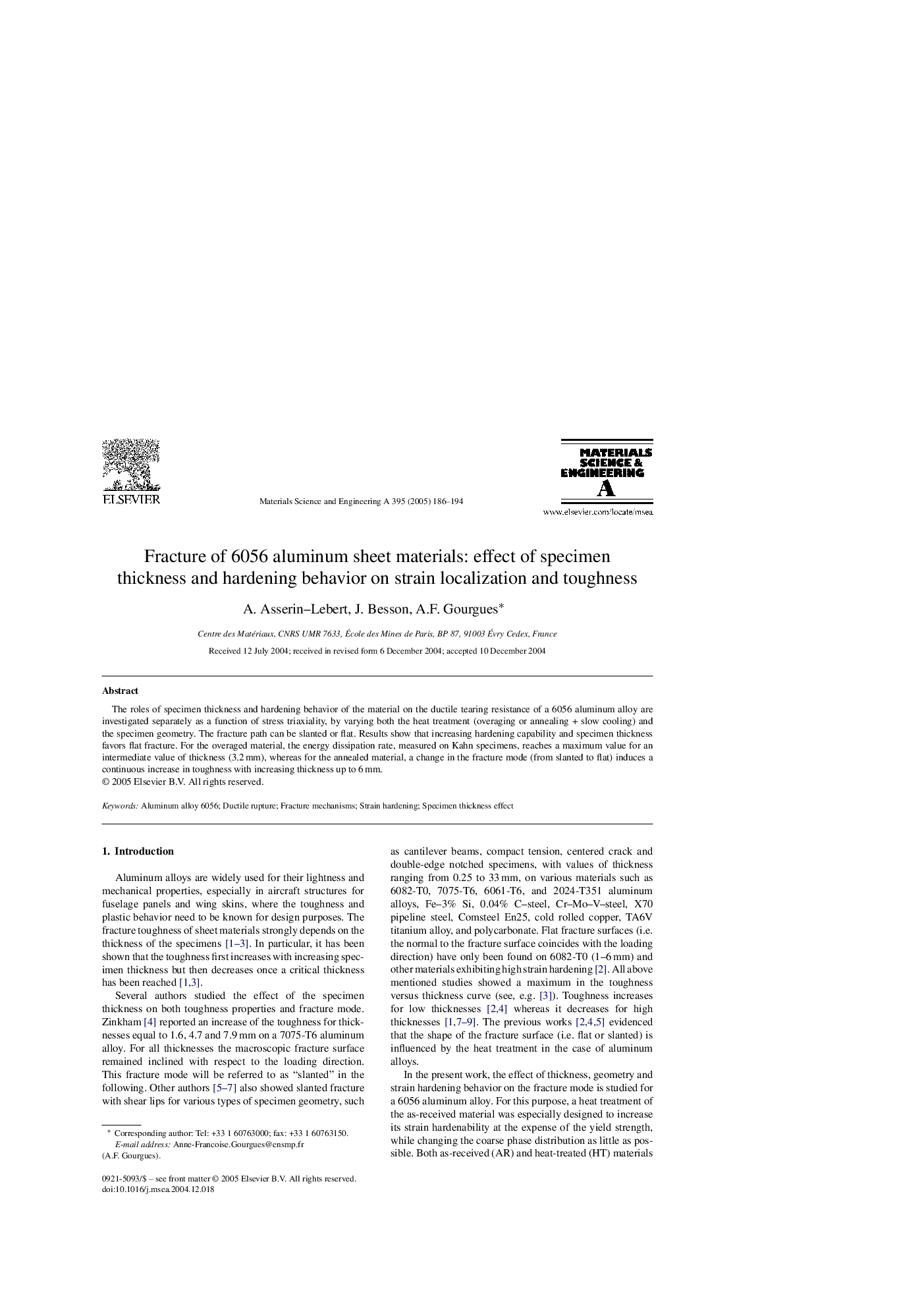| Article ID | Journal | Published Year | Pages | File Type |
|---|---|---|---|---|
| 9796398 | Materials Science and Engineering: A | 2005 | 9 Pages |
Abstract
The roles of specimen thickness and hardening behavior of the material on the ductile tearing resistance of a 6056 aluminum alloy are investigated separately as a function of stress triaxiality, by varying both the heat treatment (overaging or annealing + slow cooling) and the specimen geometry. The fracture path can be slanted or flat. Results show that increasing hardening capability and specimen thickness favors flat fracture. For the overaged material, the energy dissipation rate, measured on Kahn specimens, reaches a maximum value for an intermediate value of thickness (3.2âmm), whereas for the annealed material, a change in the fracture mode (from slanted to flat) induces a continuous increase in toughness with increasing thickness up to 6âmm.
Related Topics
Physical Sciences and Engineering
Materials Science
Materials Science (General)
Authors
A. Asserin-Lebert, J. Besson, A.F. Gourgues,
